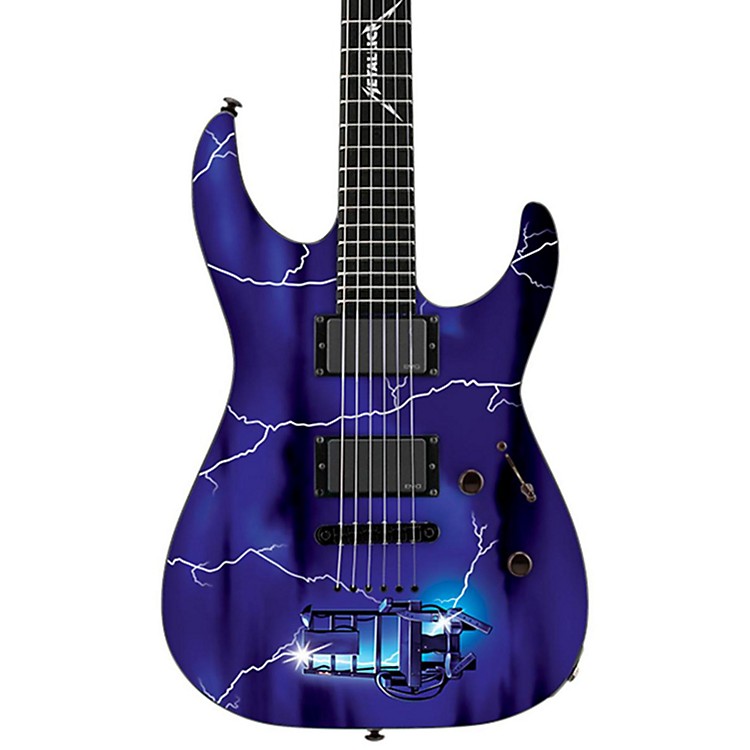

Metallica was the first to write this kind of metal album and do it incredibly well, which is the defining characteristic that separates the wolves from the sheep. Ride the Lightning set the tone for years to come in the world of heavy metal. The "Die!" bridge section is one of the greatest moments in the history of heavy metal to this day. Previous guitarist, Dave Mustaine, leaves his mark on a couple of the album's tracks, namely, Ride the Lightning and The Call of Ktulu, but where Kirk Hammett shines brightest is on Creeping Death, a staple in Metallica's discography and live performances. If you show Fade to Black to someone, and they don't, at the very least, appreciate the song for what it is, I'd advise you to drive them straight to a mental clinic. As Metallica's first ballad, and one of the first ballads written in the history of thrash metal, it's no wonder how Metallica came to be what they are today. The song that shook the metal world up and cements itself as one of the greatest tracks in Metallica's discography, and rock/metal in general, is Fade to Black. Another aspect of Metallica that separates the band from the rest of the pack is the late and almighty Cliff Burton, who comes through the most on For Whom the Bell Tolls with one of the most distinctive and recognizable basslines, not only in metal but music in general. Then comes the ominous ring that kicks off For Whom the Bell Tolls, which, to this day, still makes the hair on my arms stand up. The title track, Ride the Lightning, solidifies the songwriting structure shown on a couple of songs off Kill 'Em All, namely The Four Horsemen and Seek & Destroy, and further showcases James' and Lars' songwriting abilities. With this very track, Metallica lets the world know that they not only play very fast but can write an excellent song at the same time. Metallica's presence is felt almost immediately on Fight Fire with Fire, with the song's acoustic intro, which turns into a complete Molotov cocktail of riffage. If Metallica's momentum started with Kill 'Em All, Ride the Lightning propels them into a realm of heavy metal practically unheard of at the time of the album's release. Ever since they formed Metallica in 1981, these two gifted musicians have been on a mission to take the world by storm through the art form of heavy metal. What separates Metallica from the rest of the Big 4 of Thrash, and the rest of the metal world, for that matter, is the undeniable chemistry between guitarist/vocalist James Hetfield and drummer Lars Ulrich. These are classic heavy metal songs that even people outside of the scene adore or, at the very least, recognize. However, there are a few key moments where we hear Metallica slow down and streamline their riffs into full-fledged songs, some being ballads, that were practically unheard of before the release of this album in 1984.Īlmost 40 years later, the metal world has still not heard anything close to the magnitude of For Whom the Bell Tolls, Fade to Black, or Creeping Death. The blistering-fast aggressiveness of Kill 'Em All is still very much present. If we view Kill 'Em All as the "Baby of Thrash Metal," Ride the Lightning takes its sound and matures it into its late teenage years. It is all taken up by stupidly boosted guitars.Review Summary: The Start of Something New The drums on that record, although loud, sound like cardboard because there is no space in the mix to let them breathe in a natural way.

There is also a strange "whirring" sound on "Justice" where there are some parts where all the boosted harmonic content in the low registers causes an odd oscillating effect. It reaches totally over the top levels on "Justice" where they pushed the bass frequencies on the guitars so far that all the bass player's parts were reduced to a slight "tinky" noise in the background. If you listen to "KEA" and even "Lightning" you'll notice that those rhythm guitars are crunchy and don't have supernatural, hyped bass resonances like you start to hear on "MOP". In a traditional Rock mix it is typical to put a high pass filter onto guitars at 80Hz up as far as 250Hz - just to allow room and energy in the mix for the lower end instruments. They did this by boosting low end at the desk. The tonal decline begins when Hetfield himself starts wanting to do more EQing in the mixing and the production phase of the albums - he tended to want push the guitars down into the lower frequency spectrum where the bass and drums do most of the work. It wasn't just the Mesa II C+ - which can't actually produce stupidly low frequencies in any huge degree.


 0 kommentar(er)
0 kommentar(er)
